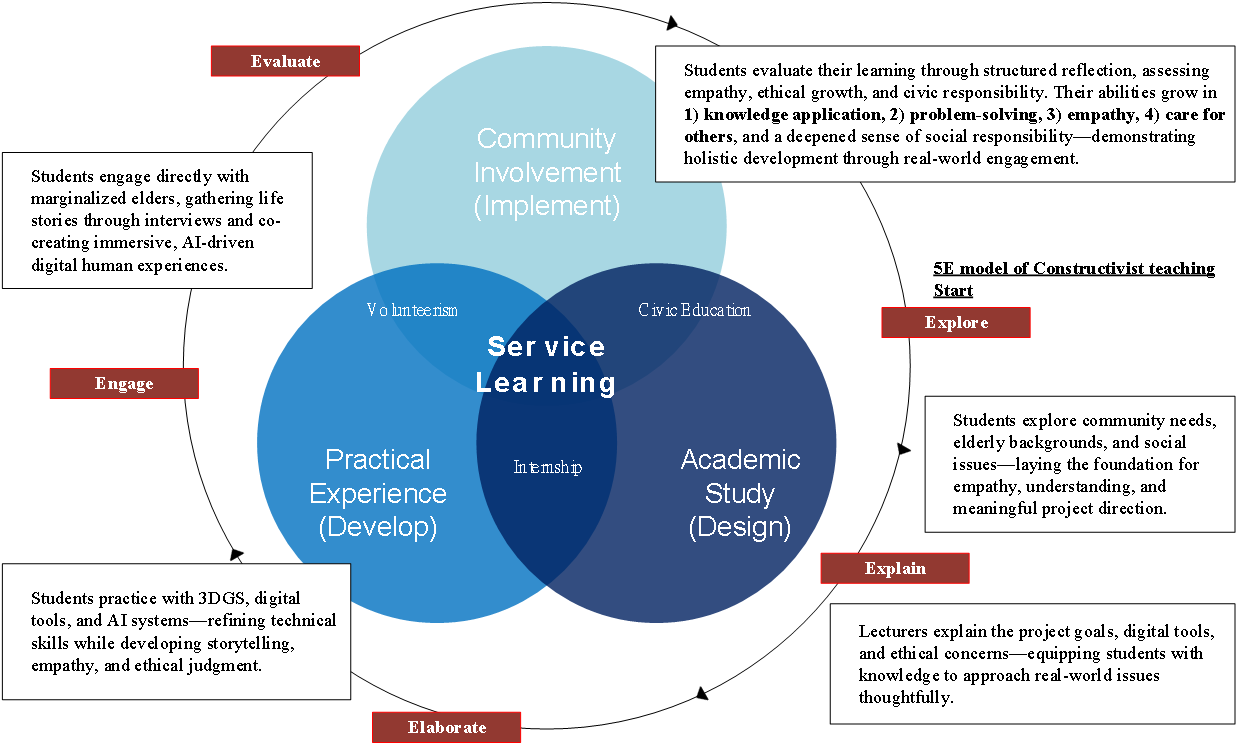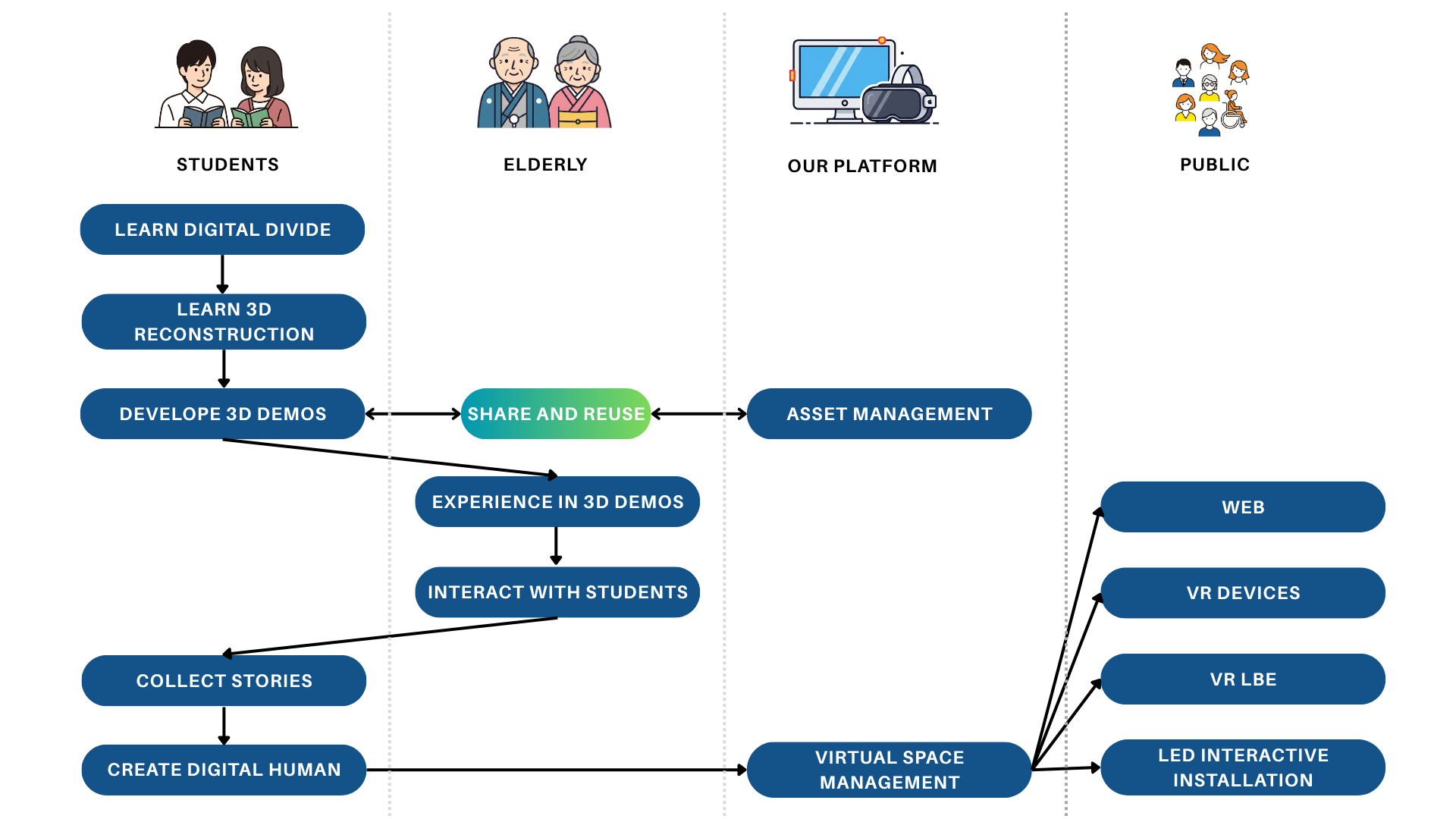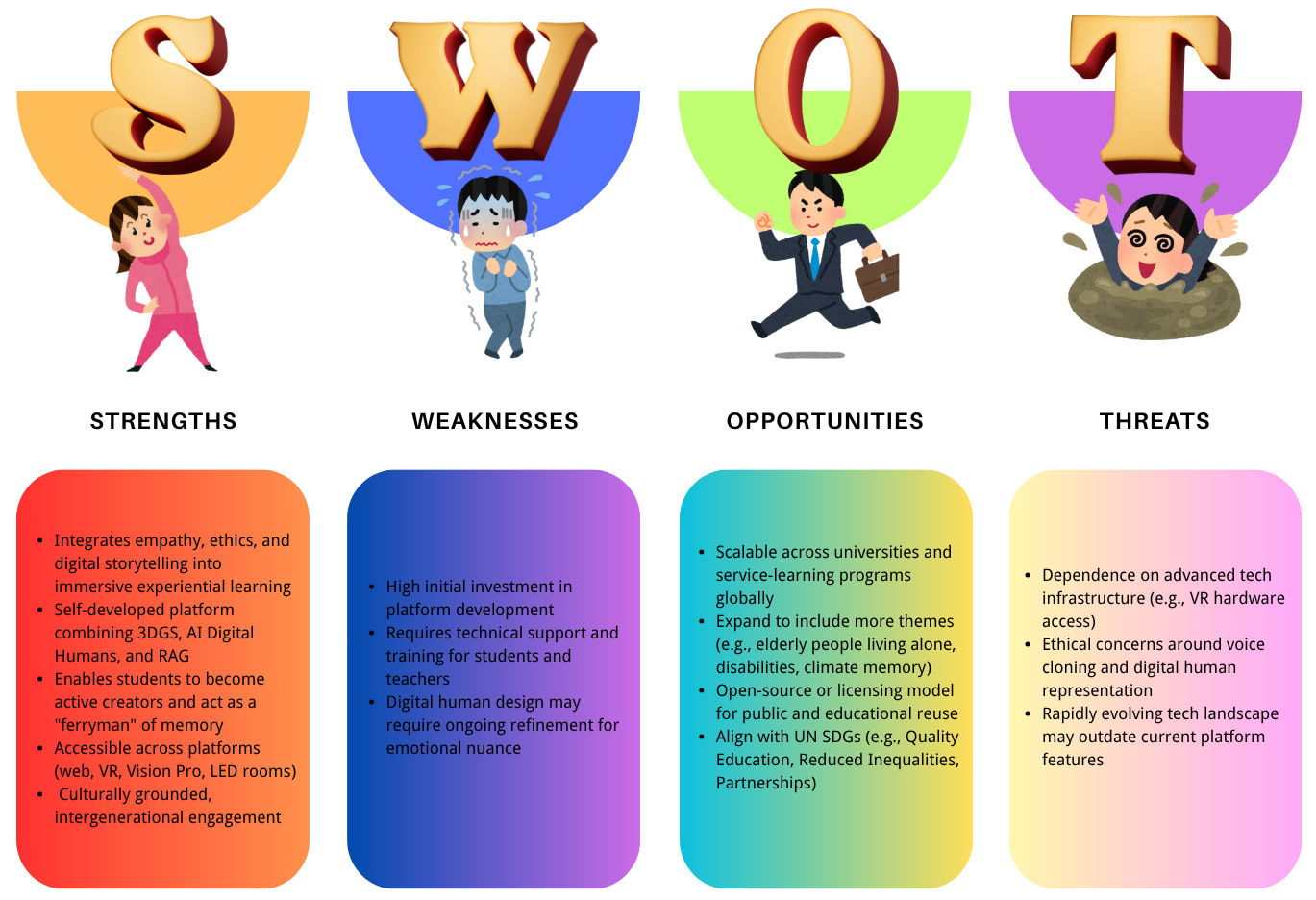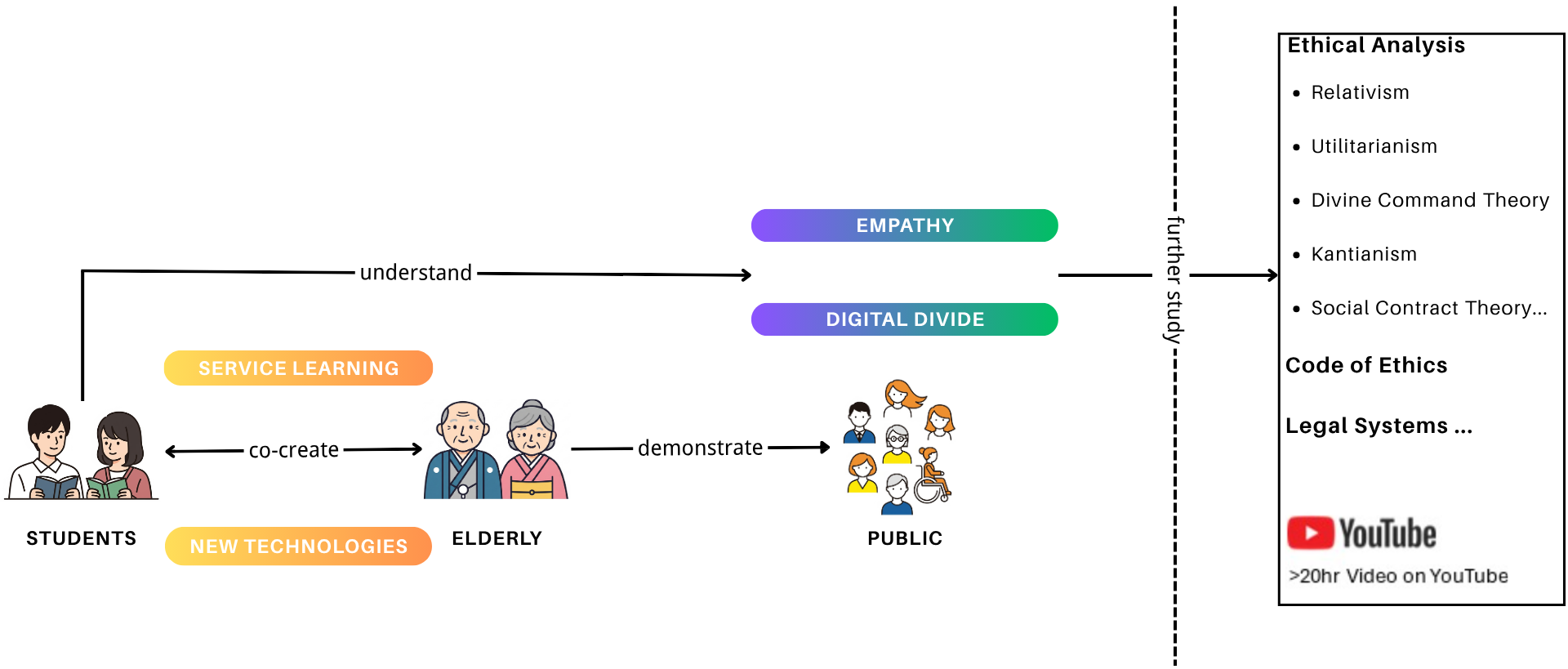Mission
& Vision
Empowering students to bridge the digital divide through service learning and emerging technologies, cultivating empathy and civic responsibility for future.
Innovation Framework Model
Discover the fundamental principles that drive our mission to bridge generations through technology.
Our project empowers students to bridge the digital divide through service learning and emerging technologies. By co-creating digital humans with elderly individuals, students cultivate empathy, ethical awareness, and civic responsibility. This intergenerational collaboration transforms learning into action—preserving memory, promoting inclusion, and nurturing values through immersive, human-centered educational experiences.

Integration of Service Learning and 5E model of Constructive Teaching
Explore how our innovative teaching methodology combines real-world service with academic excellence.
This model combines service learning with the 5E constructivist teaching approach. Students begin by exploring community needs, then apply academic knowledge to design solutions. Through real-world engagement, they elaborate and refine their skills. Finally, they evaluate both outcomes and personal growth. The process builds empathy, critical thinking, and social responsibility.
Learning Phase (Design & Develop)
Students explore community needs, elderly backgrounds, and social issues—laying the foundation for empathy, understanding, and meaningful project direction. Lecturers explain the project goals, digital tools, and ethical concepts—equipping students with knowledge to approach real-world issues thoughtfully.
Practice Phase (Implement & Evaluate)
Students practice with 3DGS, digital tools, and AI systems—refining technical skills while developing storytelling, empathy, and ethical judgment. Students engage directly with marginalized elders, gathering life stories and co-creating immersive, AI-driven digital human experiences.
Immersive Co-Creation Workflow: From Learning to Public Impact
Follow the complete journey from initial learning to meaningful community impact through technology.

Students learn digital divide and 3D reconstruction, co-develop immersive demos with the elderly, collect stories, and create digital humans. Content is stored in an asset management platform and delivered through web, VR, LED, and LBE. The platform promotes public access, empathy, and intergenerational connection through shared immersive experiences.
Learn & Design
Students learn digital divide concepts and 3D reconstruction technologies, designing solution frameworks
Co-Create & Collect
Co-develop immersive demonstrations with elderly individuals, collect life stories, and create digital humans
Deliver & Impact
Deliver content through web, VR, LED, and LBE platforms, promoting public engagement and intergenerational connection
Competitor Analysis Table: Pedagogical Innovation
Comparative analysis of our pedagogical approach against existing educational methodologies.
| Teaching Approach / Initiative | Focus Area | Limitations | How Our Project Excels |
|---|---|---|---|
| Traditional Lecture-Based Teaching | Knowledge delivery | Passive, low engagement | Engages students through real-world stories and co-creation |
| Case-Based Teaching | Structured problem-solving | Often fictional, lacks empathy | Based on true elderly stories, real emotions, ethical complexity |
| Online Platforms (MOOCs) | Content scale | Low personalization, minimal reflection | Offers emotionally responsive AI avatars for individualized interaction |
| Conventional Service-Learning | Civic experience | Lacks deep tech integration | Combines values education with immersive tech (3DGS, AI) |
| Our Project | Ethical reflection, empathy, intergenerational dialogue | Requires initial investment | Public-facing, low-cost deployment, student-driven content creation |
Competitor Analysis Table: Technological Comparison
Technical capabilities comparison with existing digital human and immersive technology solutions.
| Platform / Initiative | Focus Area | Limitations | How Our Project Excels |
|---|---|---|---|
| Spatial.io | Virtual meeting spaces | Not empathy-focused | Our digital humans create context-aware dialogue with emotion |
| Human Library | Live empathy sharing | In-person, not scalable | Our AI avatars scale stories and can be revisited anytime |
| StoryCorps | Voice storytelling | Static, one-directional | Dynamic interaction using RAG, customized by viewer |
| Holocaust Hologram (USC Shoah Foundation) | Immersive oral testimony | High-cost, limited to museums | Our model uses RGB cameras, allowing students to capture and build digital archives affordably |
SWOT Analysis
Strategic analysis of our strengths, weaknesses, opportunities, and threats in the digital education landscape.

